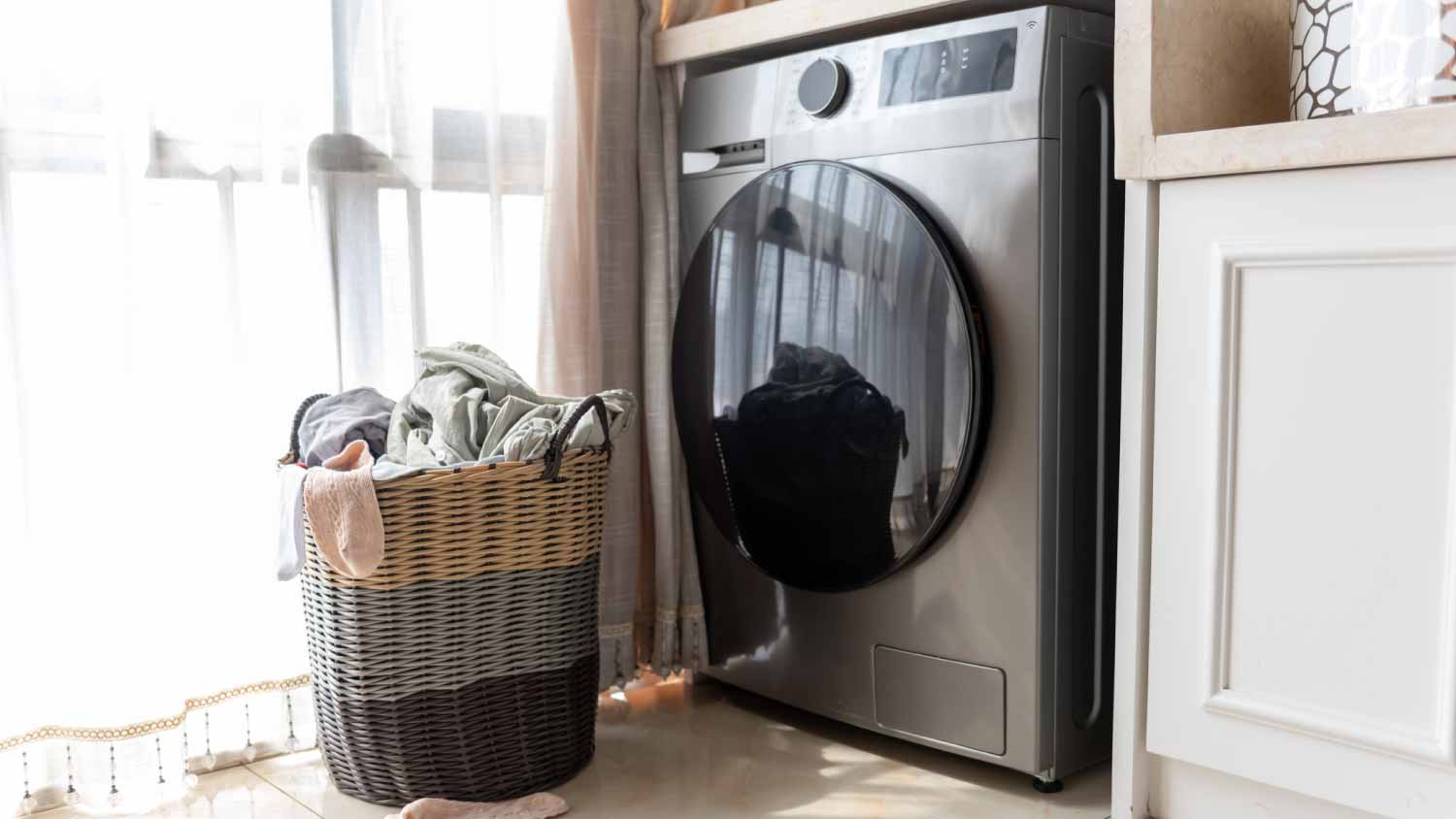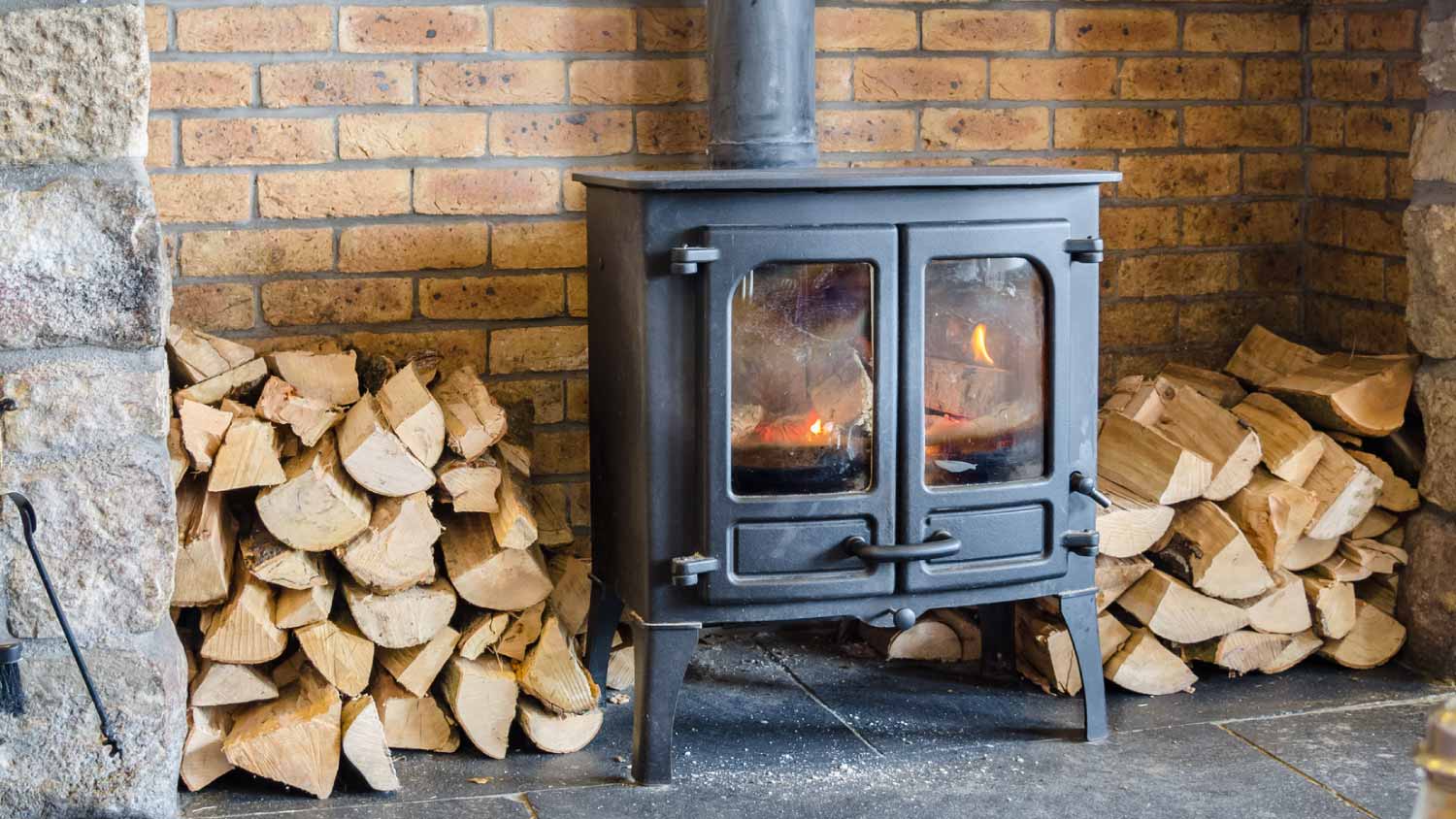5 Types of Stoves to Consider for Your Kitchen
Warm up to these different stove options


You’ve decided on just the right backsplash and countertop for your kitchen remodel, but now it’s time to start sourcing appliances. For home cooks, finding the right stove is an important task that will impact how often you cook up healthy meals at home versus dashing out for fast food. Use this guide to weigh the pros and cons of five popular types of stoves: gas, electric, induction, dual-fuel, and smart.
| Type of Stove | Life Span (In Years) |
|---|---|
| Gas | 13–15 |
| Electric | 10–15 |
| Induction | 10–17 |
| Dual-Fuel | 10–15 |
| Smart | 10–15 |
1. Gas Stove

A gas stove is a classic choice, particularly for people who love to cook. The gas flame is easy to adjust, offering more control over the amount of heat your food is getting. Gas also costs less than electricity, lowering your ongoing costs.
But gas stoves do have their limitations. For one, you’ll need a gas line; if you don’t have one already, you’ll need to pay to install a new gas line for the stove. These stoves also emit combustion gasses and therefore will require ventilation, such as a range hood.
| Pros | Cons |
|---|---|
| Low maintenance | Higher upfront cost |
| Better temperature control | Requires ventilation |
| Lower operating costs | More difficult to clean |
Best for: Temperature control; homes that already have gas lines
2. Electric Stove

A reliable choice for nearly all types of kitchens, electric stoves are a budget-friendly option that just need a 240-volt outlet (not a standard outlet) to operate. They come in various models, including options with coil stove tops or glass tops, to match any kitchen. Just keep in mind that the glass top models, although usually more expensive, are easier to clean compared to coil models.
When it comes to electric versus gas stoves, electric costs less upfront but more to operate long-term. If you’re a home chef who wants precise temperature control, you may need to splurge on a high-end model with more temperature control features or even smart app connectivity, as basic electric stoves don’t offer as much temperature control as a gas stove.
| Pros | Cons |
|---|---|
| Lower upfront cost | Higher operating cost |
| Easy to clean glass tops | Harder to clean coils |
| Works for most kitchens | Worse temperature control |
Best for: Most kitchens and lower budgets
3. Induction Stove

Although they use electricity as their fuel source, induction is a unique type of stove top that uses electromagnetic energy to heat up specific magnetic cookware. Rather than the stove getting hot, the cookware itself heats up to cook the food. This makes induction stoves more energy-efficient than other electric stoves while also adding the benefit of being safer for families with young kids or pets.
Of course, induction stoves do require special cookware to work, which may be an added cost if your collection of pots and pans aren’t magnetic. These stoves may also cost more than gas or electric stoves.
| Pros | Cons |
|---|---|
| Improved safety | Higher cost |
| Energy-efficient | Requires specific cookware |
| Faster heating | May have a humming sound |
Best for: Homes with young children
4. Dual-Fuel Stove

For serious home cooks, a dual-fuel stove can offer the precise temperature control of a gas stove top with the even cooking and baking provided by an electric oven. This can give you far more control and versatility in how you cook.
Of course, the two fuel sources mean the oven will have more parts to maintain, and you’ll need to be able to hook it up to both electricity and gas. While some other types of stoves may have DIY-friendly installation, you’ll need to hire an appliance installer near you to hook up your new dual-fuel stove.
| Pros | Cons |
|---|---|
| Better temperature control | Higher cost |
| Even heating in the oven | More maintenance |
| Versatile | Requires two fuel hook-ups |
Best for: More precise temperature control; skilled home cooks
5. Smart Range

Smart stoves, like other smart appliances, are able to connect to an app on your phone or other smart home devices. This offers perks like precise temperature control as well as recipes and cooking advice right on your device. If you find yourself turning the car around to run inside and check that the stove is off, a smart stove may be the right option for you. These models often have added safety features that allow you to check and shut the appliance off right from your phone.
However, a smart range only works if you’re connected to the internet, and all those fancy features come at a higher cost than a traditional stove. Plus, if you don’t consider yourself great with tech, there is a learning curve to controlling the stove through your devices. Also, factor in that smart appliance repairs cost more than repairing more traditional models.
| Pros | Cons |
|---|---|
| Control via app | Requires internet connection |
| Precise heating control | Higher cost |
| Added safety | Learning curve |
Best for: High-tech and modern homes; convenient cooking
Choosing the Right Stove
When deciding on which type of stove is best for your kitchen and cooking needs, there are several factors to weigh. Here are four major factors to consider when it comes to how to choose a stove:
Budget
First, make sure the stove you choose fits into your budget. Coil electric stoves tend to be one of the least expensive options upfront, but don’t forget to consider ongoing costs. Operating a gas stove tends to cost less over time than an electric stove.
Fuel Source
If you don’t have an existing gas line, expect to spend around $260 to $820 for the cost to add a gas line for a gas or dual-fuel stove.
Convenience
If you want to cook meals with precision or quick heating, consider the convenience of a smart stove or the fast heating capabilities of an induction or gas stove.
Safety
If you have small children, you’ll want to keep safety in mind. Induction stoves are popular for families, because the cookware heats up, not the surface of the stove top.





- Appliance Repair Companies
- Washing Machine Repair
- Dryer Repair
- Refrigerator Repair
- Dishwasher Repair
- Oven Repair
- Wood & Pellet Stove Repair
- Freezer Repair Services
- Wood Stove Services
- Gas Stove Repair
- Emergency Appliance Repair Companies
- Ice Maker Repair
- Gas Appliance Repair
- GE Appliance Repair
- GE Refrigerator Repair
- GE Dryer Repair
- GE Dishwasher Repair
- GE Washing Machine Repair
- Samsung Appliance Repair
- Samsung Refrigerator Repair
- Samsung Dryer Repair
- Samsung Washer Repair
- Samsung Dishwasher Repair
- Samsung Oven Repair
- Whirlpool Repair
- Whirlpool Refrigerator Repair
- Whirlpool Washer Repair
- Whirlpool Dryer Repair
- Whirlpool Oven Repair
- Maytag Appliance Repair
- Maytag Refrigerator Repair
- Maytag Washer Repair
- Maytag Dryer Repair
- Maytag Dishwasher Repair
- Kitchenaid Appliance Repair
- Kitchenaid Oven Repair
- Kitchenaid Refrigerator Repair
- Kenmore Appliance Repair
- Kenmore Dishwasher Repair
- Kenmore Washer Repair
- Kenmore Dryer Repair
- LG Refrigerator Repair
- Bosch Appliance Repair
- Kenmore Refrigerator Repair
- LG Appliance Repair Services
- GE Microwave Repair
- Electrolux Appliance Repair
- Electrolux Washer Repair
- Kitchenaid Dishwasher Repair Services
- Wood Stove Inspection
- Dishwasher Installation
- Trash Compactor Repair
- How Long Do Gas Stoves Last?
- Should You Convert Your Electric Stove to Gas? 5 Things to Consider
- 7 Types of Stove Burners and Cooktops for Whipping Up Tasty Homemade Meals
- How Long Do Stoves Last? It Depends on the Type
- Stove Dimensions: A Guide to Measuring All Range Sizes
- What Are the Parts of a Stove?
- Can You Replace the Glass Top of a Stove?
- Who Fixes Gas Stoves?
- Who Fixes Electric Stoves?
- Who Installs Wood-Burning Stoves?










